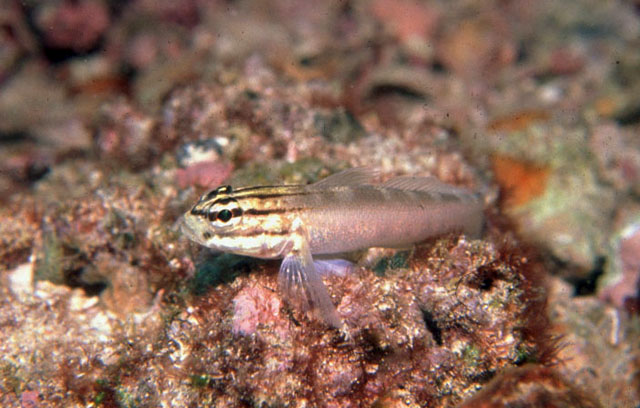| Gobiidae (Gobies), subfamily: Gobiinae |
| 7.75 cm TL (male/unsexed); 6 cm TL (female) |
|
demersal; marine; depth range 7 - 25 m |
| Eastern Central Atlantic: known only from Cape Verde. |
|
Dorsal spines (total): 7-7; Dorsal soft rays (total): 12-13; Anal spines: 1-1; Anal soft rays: 12-12. Anterior nostril with single triangular or more elongate tentacle, posterior nostril pore-like, with slightly raised edges; angle of jaws below anterior edge of pupil; upper lip with equal to or slightly narrower than preorbital width; teeth caniniform, in three or four rows medially with outer and inner somewhat enlarged (Ref. 39517). Body pale brown with several dark brown blotches interspersed with pale saddles along dorsal midline, variously sized dark blotches along lateral midline; fine horizontal striae sometimes evident along the body; snout with antrorse V-like dark mark (Ref. 39517). |
| Found most commonly on mixed coralline algae, but also on open sand and rock substrata, often with Gnatholepis thompsoni (Ref. 39517). |
|
Vulnerable (VU); Date assessed: 15 July 2014 (B2ab(iii)) Ref. (130435)
|
| harmless |
Source and more info: www.fishbase.org. For personal, classroom, and other internal use only. Not for publication.

